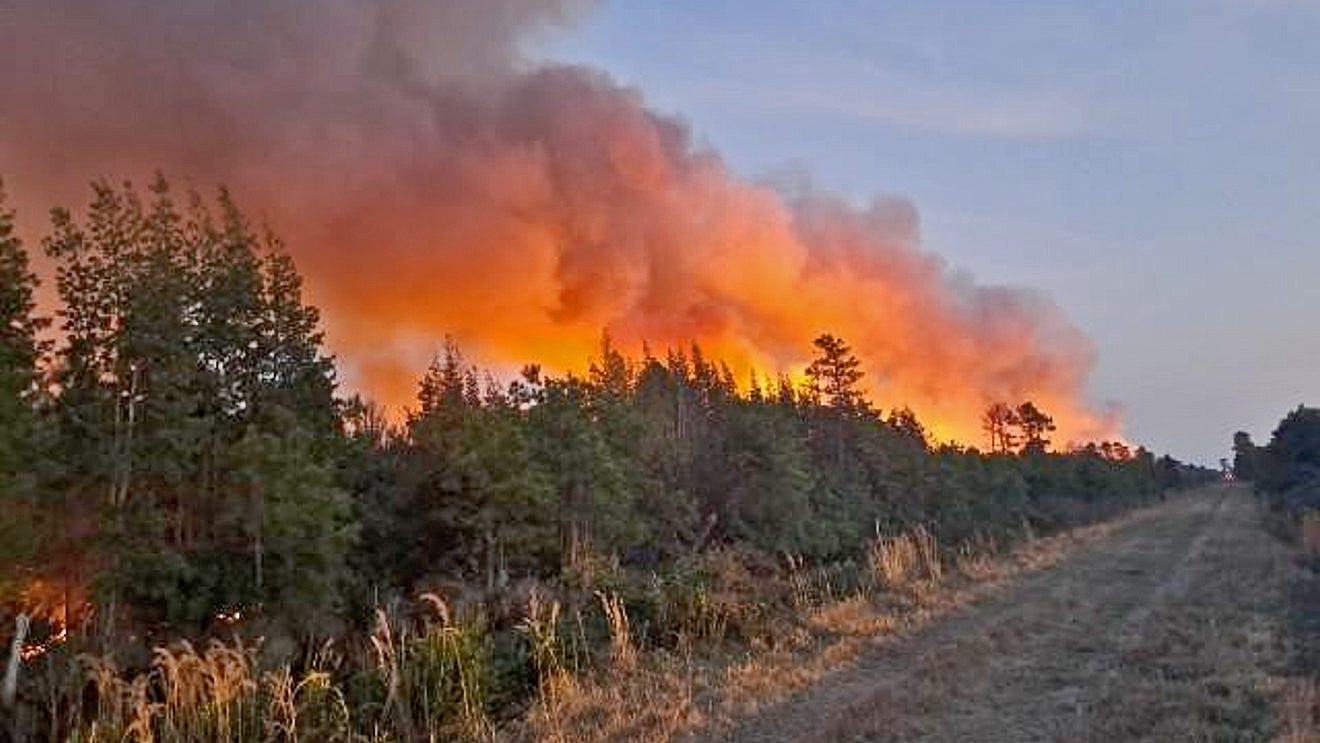Climate change to bring more fires to the southern Appalachians
Climate-driven drought and human development increase opportunity for wildfires
In the late fall of 2016, headlines shouted of the unprecedented wildfires that blazed across the U.S. South. After months of overly dry conditions, over 30 wildfires scorched 80,000 acres—an area about twice the size of the entire Washington, DC, federal district—through Georgia, the Carolinas, Alabama, Tennessee, and Kentucky. Smoke from the fires affected air quality throughout the South. Fire and ecology experts linked climate change as a factor, at least in part.
A scientific study published this month in the journal Fire Ecology predicts that fires like those of 2016 will become more common in southern Appalachia due to climate change and other human factors.

Through computer modeling, the research team that performed the study looked at southern Appalachia under differing climate predictions until the end of the 21st Century. Assumptions ranged from three to nearly 13 degrees Fahrenheit of average warming. All models predicted more long-term droughts and intermittent droughts, which will result in an increase in wildfires. Compared to a baseline of the fires throughout the region during a 46-year period from 1972 through 2018, the differing climate projections developed by the scientists indicated that fires would consume from 42 percent more forest to almost five times as much. According to the researchers, the increases will occur despite state and federal firefighting efforts.
The researchers, from North Carolina State University, Conservation Science Partners, and the U.S. Forest Service, concentrated their study on the region of Appalachia known as the Blue Ridge ecoregion, which spans North Carolina, South Carolina, Tennessee, and Georgia. This ecoregion is dominated by hardwood forests of oaks, maple, and poplar. If you’ve ever spent time in that part of the country or hiked through the area, you know that this part of the U.S. is pretty damp, receiving highest amount of precipitation in the United States east of the Cascades (although the authors note that portions of the area experience drier conditions). Knoxville, Tennessee, which is in the ecoregion, receives almost 50 inches of rain annually. That’s pretty wet.
Conditions and history of southern Appalachian forests
Under normal conditions, fires are unlikely to spread in forests so damp. Even dead branches and logs, the normal fuel of fires in the western U.S., are just too waterlogged to catch fire. But the droughts predicted by the climate models will likely recreate the conditions that lead to the South’s 2016 fires, in which dead logs dry out and even living trees strain under reduced water availability.
The authors note that the forests of southern Appalachia have already been greatly altered by man. The region was heavily logged starting in the 1800s, with the introduction of the railroads. By the 1920s, as much as 90 percent of the southern Appalachian forests had been logged, resulting in compositional changes to the forests’ makeup.
After all that logging, the treatment of the lands emphasized fire suppression and exclusion, shifting the fire recurrence from around 25 years to hundreds of years, which favors non-fire adapted species, such as red maple and the tulip tree. During the 20th Century, an introduced blight from Asia extirpated the American chestnut, a huge and towering tree that dominated the Appalachian forests from Maine to Alabama. Hiking through North Carolina or other parts of southern Appalachia now is quite different from what humans experienced 200 or 300 years ago.
Other factors besides climate change influence fire occurrence
The study included the influence of what is called the wildland-urban interface (WUI), which is the open spaces that lie adjacent to cities and suburbs. When I lived with my family in Atlanta in the 1960s, the WUI of the South was limited to mostly smallish towns connected by two-lane roads. That has changed with increasing urbanization and development connected by interstate highways in southern states. Once a sleepy mid-sized city, metropolitan Atlanta now sprawls over 39 counties.
As people have more contact with wildlands, they have more chances to ignite fires with their cigarettes and charcoal grills. The scientists also included this greater increase in ignition in their modeling of projected fires in the South.
One of the authors’ recommendations is termed “fuel reduction,” clearing or thinning forests, which may be an effective tactic in the WUI to reduce fire incidence. I understand that western forests and chaparral differ from eastern forests, but a GIS analysis of western wildfires I performed in grad school, contradicts this suggestion. I found that wind and topography mattered more than fuel load. Take this with a grain of salt. The conditions of eastern forests and Southern California, where I did my study, differ greatly.
The authors also anticipate that oaks will come to dominate southern Appalachian forests into the 22nd Century, owing to their ability to survive low- to moderate-intensity fires. Past the year 2200, oak regeneration may become iffy. The team concluded by surmising that climate change-driven drought, coupled with the increasing WUI, will drive the composition of southern Appalachian forests into an ecosystem unlike the present or the past.



